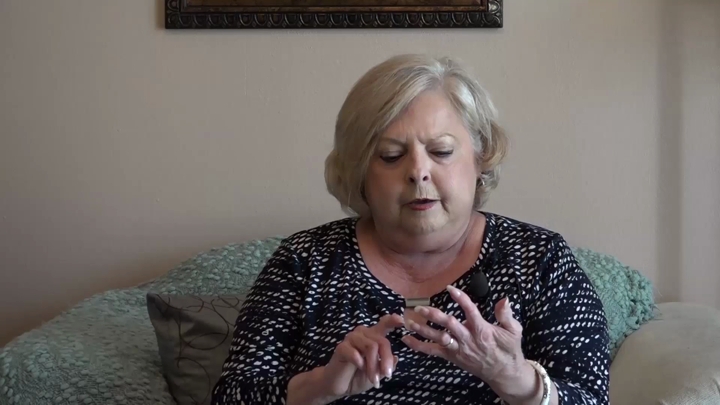Payne / Racism and the Black Community
sign up or sign in to add/edit transcript
Payne: CNN came here, oh, about eight or nine years ago, and they wanted to have this community show, “Does racism still exists?” and they wanted me to participate in the panel and I’m like I’m not participating in that. That’s a stupid question. Of course, it exists. The question you ought to ask yourself is how do we resolve the racial issues. If you just want to come down here and talk about “does racism exist?” you’re not going to do anything but implode a community that’s already in the racial divide. So, you’re not coming to try to resolve the issue, you’re just coming here to highlight the issue. I’m not going to participate in that. I recognize that those issues exist, but I’m not going to highlight it unless we’re going to talk about how we’re going to resolve it. Must have been about seven or eight years ago, I did an economic empowerment program—probably why people told you to come talk to me—about supporting black owned businesses and, you know, people assumed, based on the position I took, that I was trying to divide the community. I was not trying to divide the community. I was trying to bring up the black community. I wasn’t trying to divide it. I was just trying to raise up the black community. It is really a conservative platform. Every conservative—when you look at the conservative platform, they tell you to raise yourselves up by your bootstraps. So, I took the conservative platform and I put a liberal social action program to combine with the conservative platform. So, you tell me to raise myself up by my bootstraps, but then when I support myself, I’m being racist. I’m not being racist, I’m doing exactly what you told me to do. So, I found five businesses in the Jefferson County community and I asked the community to support those businesses for ninety days. After ninety days, we were going to do a statistical analysis to determine how successful the Buy—it was called the Buy Ninety Program—how successful the Buy Ninety Program was going to be. I used the January, February, March growth rates form the previous years from the year in which we did the ninety days. I had a statistician from the University of Texas, because I figured if you just did it generally they would say you monkeyed the numbers, that’s why it was effective. So, I got a statistician from the University of Texas. He did a statistical analysis and we were able to show growths greater than one hundred percent profitability. Actually, it was over three hundred percent profitability of those five businesses by targeting those five businesses, one of which was a gas station which was right here on the corner of I-10 and MLK. I didn’t even know we had a black-owned gas station. It was the only one we had in all of Jefferson County. We targeted that business. Probably six times in that ninety days, they had to put up a sign that said no more gas. They ran out of gas. We saw tremendous growth within those five businesses and other black-owned businesses during that ninety-day period. Not because we were trying to divide the community. We were trying to bring up the black community and the black-owned businesses. I had a black dollar made, printed up and I asked everybody to carry it in their wallet so that when you opened up your wallet, it reminded you subconsciously, could you have spent your green dollars in the black community so that we can regenerate growth within our own community. Which, again, is done in every other community. When you look at the Vietnamese community—certainly I understand because I grew up with the Vietnamese, many of the Vietnamese community. They regenerate their dollars. Hispanic community will do it. The white community, they mastered it. The blacks were the only community I thought, from an ethnic standpoint, that did not regenerate their dollars in their own community. So, to me, I thought it was an opportunity for us to highlight that and by doing that, many people thought that I was dividing the community. I explained to some of the people who challenged me on that, if I came in and said I wanted to bring the community together, why do you think that I need to come in and ask you for a handout? If my dollar spends like your dollar, why can’t we sit down and have business discussions? You want my dollar to be worth fifty cents and your dollar to be worth a dollar and then I’ve got to come and ask you for a handout. I don’t want a handout. I don’t want a handout. I didn’t ask for any government assistance. I didn’t ask for any government programs. All I asked for was for us to regenerate our dollars within our own community. So, the conservative platform people that looked at me and I’d say what’s your problem? I did exactly what you said we ought to do. You say pull ourselves up by your bootstraps. That’s what we’re doing. You say we shouldn’t ask for federal aid. Didn’t ask for any. You said it’s states rights. That’s what we’re doing. So, what’s your problem with this? What’s your problem? Your problem is that it’s successful. We are now doing what you’ve been doing. My thing is, I’m not telling you not to support white businesses. My thing is, if you’re going to buy an apple, and there’s an apple in your community and an apple in their community, why would you leave your community to buy their apple if the apple is the same? And that’s why I would say, “Ice is ice.” That was the thing I used to talk about when I was doing the program. Ice is ice. Your ice can’t be any colder than my ice. Why am I going to leave my community to buy your ice when I can buy ice in my own community, recirculate those dollars, and make my community grow? That’s an area I pushed. I created it. It was successful. It was nationally recognized. It was picked up by several national stations. It was the only statistically proven economic empowerment program of blacks that I know existed. I’ve heard things about power economics and things of that nature. Spending the two-dollar bills and the dollar coins to show black power, buying power, but no one has proven the statistical significance of the effectiveness of the program. This was the first time a statistically proven, effective, economic empowerment program had been shown. Then, I publicized all the information to whoever wanted—to whatever media outlet wanted it. Some good reviews. Some not necessarily so good because, again, people didn’t like what I did, but how could you argue about it? It was exactly what you told me we ought to—quit asking for money, quit asking for federal money, pull yourselves up by your bootstraps. Ok. We’ll do that. Now what’s your problem? Well, you’re dividing the community. No, I’m doing exactly what you said I ought to do. I’m pulling myself up by my bootstraps and I’m not asking for federal money. Your problem is that I’m not taking my dollars and putting them in your community. I’m taking my dollars and putting them back in my community. That’s your problem.
| Interview | Interview with James Payne |
| Subjects | Oral Tradition |
| Work › Black-Owned Businesses | |
| Community Organizations | |
| Discrimination or Segregation | |
| Geography › Places (Cities, Towns, Neighborhoods, and Intersections) | |
| Ideology › Conservatism | |
| Tags | University of Texas at Austin |
| CNN | |
| sign up or sign in to add/edit tags | |
| Interview date | 2016-06-16 |
| Interview source | CRBB Summer 2016 |
| Interviewees | Payne, James |
| Interviewers | Grevious, Danielle |
| Duration | 00:07:52 |
| Citation | "Racism and the Black Community," from James Payne oral history interview with Danielle Grevious, June 16, 2016, Beaumont, Civil Rights in Black and Brown Interview Database, https://crbb.tcu.edu/clips/3184/racism-and-the-black-community, accessed January 15, 2026 |






